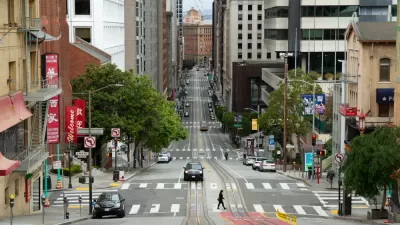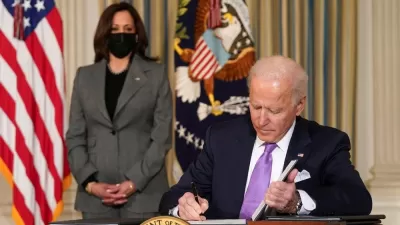It's a tale of two cities as New York starts to emerge from the pandemic.

Ginia Bellafante writes that New York City is "newly awakened to pleasure." Outsiders might be surprise to see a city full so much evidence of that pleasure—"[from] biking everywhere, to dining sheds covered in peonies, to jazz bands turning up in Prospect Park on random weekdays, to Little Island and drinking orange wine at lunch.
Unfortunately, these scenes of joyful late-stage pandemic life are "hardly a reality for most New Yorkers," according to Bellafante. "To the contrary, a recent survey of 700 workers in Astoria, Queens, conducted by the New School’s Center for New York City Affairs, found that of the third laid off during the past year, only 38 percent have returned to work."
This discussion of the post-pandemic city is place in context of the city's upcoming mayoral election. The Democratic primary, expected to determine the eventual winner of the election, is scheduled for later this month. Bellafante's verdict about the next mayor's role in the post-pandemic city: the economic recovery will have to break from the mold of previous recoveries by investing in neighborhoods defined by extreme poverty.
"No one really knows what to do with a neighborhood that cannot gentrify its way to glory," writes Bellafante to conclude the column. "Brownsville isn’t struggling with the question of whether or not to keep outdoor dining sheds. It doesn’t have any."
FULL STORY: New York City Can’t Just Gentrify Its Way Back to Normal

Alabama: Trump Terminates Settlements for Black Communities Harmed By Raw Sewage
Trump deemed the landmark civil rights agreement “illegal DEI and environmental justice policy.”

Planetizen Federal Action Tracker
A weekly monitor of how Trump’s orders and actions are impacting planners and planning in America.

The 120 Year Old Tiny Home Villages That Sheltered San Francisco’s Earthquake Refugees
More than a century ago, San Francisco mobilized to house thousands of residents displaced by the 1906 earthquake. Could their strategy offer a model for the present?

In Both Crashes and Crime, Public Transportation is Far Safer than Driving
Contrary to popular assumptions, public transportation has far lower crash and crime rates than automobile travel. For safer communities, improve and encourage transit travel.

Report: Zoning Reforms Should Complement Nashville’s Ambitious Transit Plan
Without reform, restrictive zoning codes will limit the impact of the city’s planned transit expansion and could exclude some of the residents who depend on transit the most.

Judge Orders Release of Frozen IRA, IIJA Funding
The decision is a victory for environmental groups who charged that freezing funds for critical infrastructure and disaster response programs caused “real and irreparable harm” to communities.
Urban Design for Planners 1: Software Tools
This six-course series explores essential urban design concepts using open source software and equips planners with the tools they need to participate fully in the urban design process.
Planning for Universal Design
Learn the tools for implementing Universal Design in planning regulations.
Clanton & Associates, Inc.
Jessamine County Fiscal Court
Institute for Housing and Urban Development Studies (IHS)
City of Grandview
Harvard GSD Executive Education
Toledo-Lucas County Plan Commissions
Salt Lake City
NYU Wagner Graduate School of Public Service





























